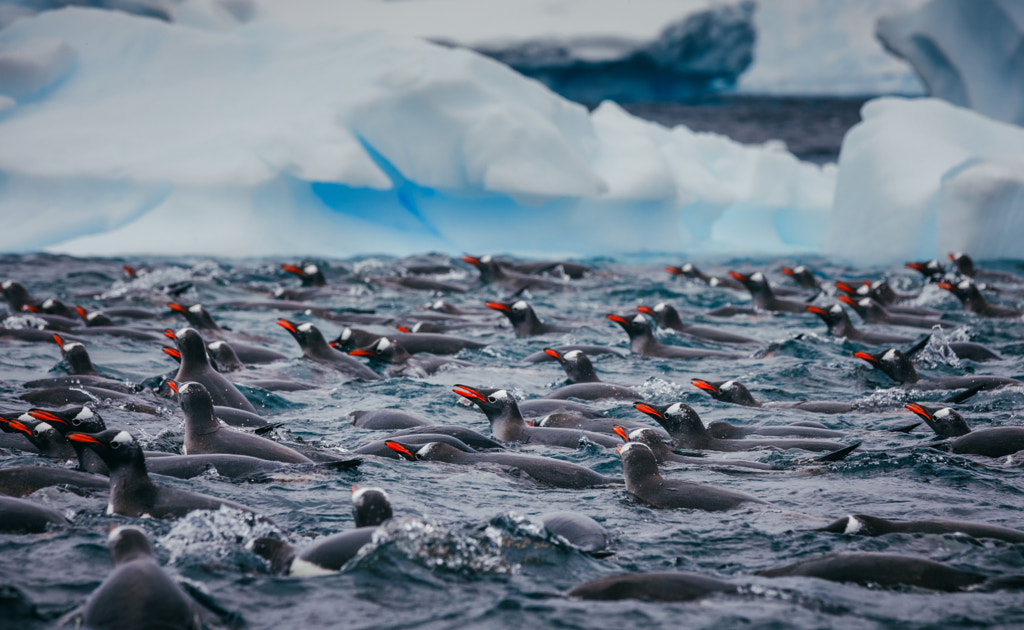500px is home to more than 120 million images from photographers across 195 countries, with new content added every day. Its commercial distributors have hundreds of millions of photos, and one of them, Getty Images, boasts more than a million customers—all looking to download images for their campaigns.
Commercial Licensing is a great way to earn passive income and increase your exposure, and in 2020, it’s never been more important to give yourself a competitive edge using metadata. Search engines ranging from Google to those used by 500px and its distributors rely on relevant, descriptive titles, keywords, and location information to deliver exactly what buyers want, and these elements are an essential part of any Licensing Contributor’s workflow.
Luckily, it’s easier than ever to automate and speed-up the keywording process using online keywording tools and post-processing software for batch application. In this brief guide, we’ll outline just a few best practices to follow every time you submit a new set of images for Licensing.
Contents
Get specific when tagging your location
Locations are crucial pieces of metadata, so you’ll want to add them to your keywords and geotag them as well. As we’ve noted in previous articles, location tags should be as detailed and layered as possible; “Always try to include city, region, province, and country names,” the 500px Content Team urges. One buyer might search for a general area, and another might look for a specific landmark, so include them all.
For travel photographers, it can be tricky to remember exactly where every photo was taken, especially when you return from a trip abroad with hundreds or even thousands of images. For that reason, we recommend geotagging all your photos right away.
In recent years, there have been a handful of mistakes in which political campaigns or tourist destinations have used stock photography in misleading ways, like promoting a specific location using images taken somewhere else. Buyers need to be able to trust that the info you supply is accurate, and photographers can help their clients avoid potential problems by adding locations as soon as possible.
Tag your location—always
Travel, architecture, and wildlife photos often revolve around specific locations, but of course, there are some situations where the location isn’t as relevant to the content of the image, as in a still life or street portrait. In these cases, that information might not make it into the title of your image, but it’s still worth tagging it.
“Often, brands want content to match their targeted audience, and this can make photos from specific locations or regions more valuable in certain situations,” the Content Team explains. “Location-based advertising” has been something of a buzzword in recent years, and for good reason; according to research, more than eight out of 10 marketers say location-based marketing resulted in growth in their customer base, response rates, and customer engagement.
Even if your photo looks like it was taken at a non-descript location, go ahead and tag it. It could speak specifically to the culture, atmosphere, or even cuisine of a particular place, making it feel personalized and resonant to image-buyers and their customers.
Get granular with keywords
“You can never be too detailed with accurate information, and we find that potentially relevant information is often missing or overlooked,” the Content Team stresses. That doesn’t mean you should tag every single element or object visible in your photo; instead, it means getting as specific as you can about the most important subjects.
For instance, this photo by Elke Vogelsang isn’t just tagged with general words like “pet”, “domestic animals”, “feline”, and “cat” but also more specific terms like “sphynx cat”, “hairless animal”, and “cat with tongue out.” You can get equally specific with humans by mentioning age, ethnicity, gender, number of people, their relationships, and more—just refer to your model release to make sure you get those details down accurately.
Companies can get quite specific in their searches, so preparation is key. The more detailed your keywords, the better your chances of targeting an ideal client; if someone searched for “cat” on 500px, they’d end up with 840,787 to choose from, but if they narrowed their search to “sphynx cat”, your photo would be one of just 1,424 results.
As the 500px Content Team reminds us, “Keep the most essential information in the first five keywords, as these are weighted heavier when searching by keyword.”
Quick tip: Avoid tagging brand names. If, for example, you take a photo of a car in the distance, you might feel tempted to add a specific keyword like “Toyota” or “Honda”. Unfortunately, these names are copyrighted, and if you want to license these images, you have to make sure that specific brands are not identifiable in any way (via logos, designs, and, yes, keywords).
Use common phrases
Your keywords don’t always have to be single words, so feel free to incorporate popular phrases or concepts, as these can give you an SEO boost. Some frequently-used examples include “the road less traveled”, “fear of missing out”, “planning ahead”, or “saving for a rainy day”. Put yourself in the buyers’ shoes and imagine what kinds of ideas they might be looking for and how your photos could be tailored to their needs.
Keep your titles literal
Your title is your lead, so it should summarize the most essential aspects of your story. Sometimes, it’s the only thing a buyer or search engine will see, so it has to grab their attention and accurately describe the image.
Your title should tell people what’s in the photo—who, what, where, when, and why—pure and simple. Stick to the facts, and refrain from copying and pasting lengthy sentences from the encyclopedia; short and sweet should do the trick.
Title photos individually
Titles are so important that you should approach them individually; there’s no one-size-fits-all formula for titling a photoshoot. These two photos by Halfpoint might have been taken on the same day, but they have different titles that set them apart: “Unrecognizable small girl picking strawberries on the farm” and “Cheerful small girl running in the backyard garden, having fun” could appeal to various buyers craving something unique, whereas a general and vague title like “small girl outdoors” might not.
When your photos are accepted for Licensing on 500px, the titles make their way into the URL on Getty Images, and that has a significant effect on your SEO. For example, the URL for this photo by Nicolas Fuentes is the same as its title on Getty Images—“two-women-in-cafe”—and that means that it’s likely to show up on Google search results by someone looking for exactly that.
If the location is relevant, go ahead and include all the details in your title, from the landmark and neighborhood to the city and country. Although it will vary based on your genre and specialty, it can help to give yourself a checklist of essential information to always include in your titles.
Quick tip: You don’t need to add exact dates or times to your titles or descriptions for commercial photos, as these are unlikely to be useful to clients, but tag the season or time of day if it’s relevant.
Tell us what’s special about your photo
Titles can also be a way to make your photo stand out from the crowd, so if there’s something interesting or unusual about your subject, setup, or perspective, feel free to include that. There are 13,817 results for the search “lavender field” on 500px, but just 73 for the search term “Aerial view lavender field”. The sweeping overhead perspective makes this photo by Valentin Valkov especially unique and valuable, so it’s worth highlighting in the title.
Similarly, if you’ve photographed a portrait or still life with lots of copy space, remember to tag “copy space” to let buyers know.
Don’t forget your descriptions
If the best titles are concise and literal, your descriptions give you a little more freedom to touch on some of the key concepts and ideas at the heart of your photo. “The description is your opportunity to broaden the SEO of your photos,” the Content Team tells us.
“Here, you can include both literal and abstract terms. For example, the description of a photo of a person meditating could have phrases like ‘taking a moment for yourself’, ‘selfcare’, and ‘mindfulness’ in addition to the literal ‘meditation’. This will help bring visibility and boost the sales potential of your photos.”
Get into the nitty-gritty about the location, mood, or theme of your shoot, and make it as descriptive as possible. When in doubt, use more specific terms in these descriptions—e.g., “Gentoo penguins swim tightly together waiting for the right opportunity to make the short but potentially dangerous swim to their colony at Cuverville Island, Antarctica” is better than “Penguins in Antarctica”. You don’t have to include all these descriptive details in your titles, of course, but remember to add them to your keywords.
Locations, keywords, titles, and descriptions are all essential individually, but it’s how they work together that makes all the difference. Because there are so many ways for buyers to find your images across various platforms, think ahead, and cover all your bases.
Once you’ve added keywords, titles, and descriptions, give it a once-over to make sure everything is spelled correctly, and you haven’t missed any relevant details. Clear and thorough metadata won’t just reward you in the short-term but also in the long-term, as buyers find new and inventive ways to make image searches work for them.
To make the process as painless as possible, check out our article on optimizing your Licensing workflow.
Not on 500px yet? Click here to learn about Licensing with 500px.









